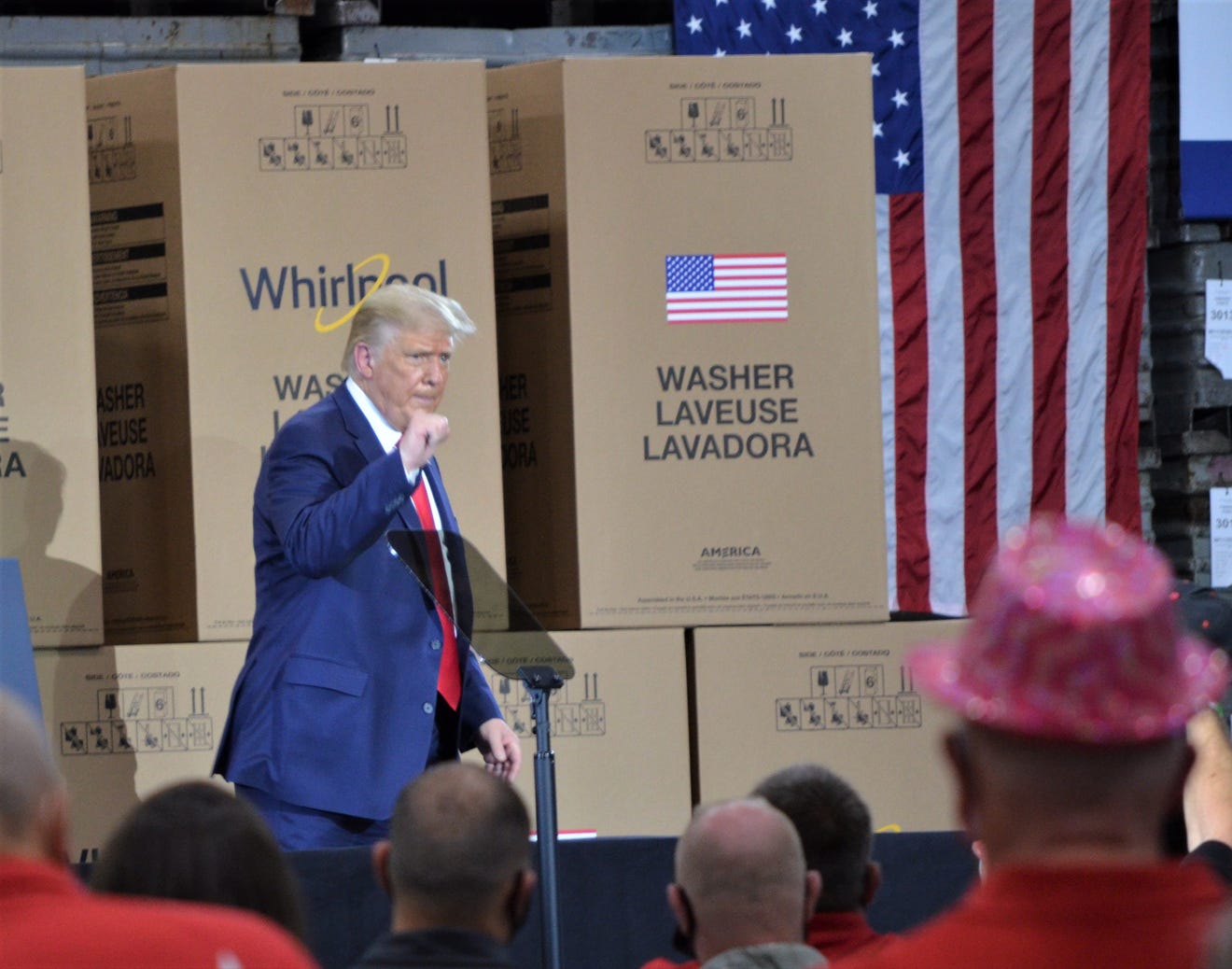Toyota's Steepest Losses: How Trump Tariffs Impacted The Automaker

Table of Contents
The Impact of Section 232 Tariffs on Toyota's Operations
The Trump administration's Section 232 tariffs, ostensibly aimed at protecting national security by addressing the import of steel and aluminum, significantly impacted global supply chains, including Toyota's. These tariffs imposed substantial duties on imported steel and aluminum, crucial components in vehicle manufacturing.
- Increased Raw Material Costs: The tariffs led to a sharp increase in the price of steel and aluminum, directly impacting Toyota's production costs. This increase wasn't limited to the direct cost of materials; it also influenced the pricing of numerous downstream components.
- 25% Tariff on Steel Imports: The 25% tariff on steel imports from several countries, including key suppliers to Toyota, forced the automaker to absorb higher costs or pass them on to consumers through increased vehicle prices.
- 10% Tariff on Aluminum Imports: Similarly, the 10% tariff on aluminum added further pressure to Toyota's already strained margins. The cumulative effect of these tariffs on raw materials severely impacted profitability.
- Retaliatory Tariffs: In response to Section 232 tariffs, several countries imposed retaliatory tariffs on US goods, impacting Toyota's exports and creating further challenges for the global automotive industry. This tit-for-tat tariff war added complexity to an already volatile market.
Disrupted Supply Chains and Production Slowdowns
The tariffs imposed by the Trump administration significantly disrupted Toyota's carefully calibrated just-in-time inventory management system. This system, designed to minimize waste and maximize efficiency, relies on a stable and predictable supply chain. The tariffs introduced considerable instability.
- Component Shortages: Increased tariffs on imported components, sourced from various countries, resulted in shortages and delays. This affected everything from engine parts to interior trims.
- Increased Lead Times: The uncertainty caused by the tariffs led to increased lead times for essential components, disrupting Toyota's carefully planned production schedules.
- Just-in-Time System Disrupted: The just-in-time system, highly efficient under normal conditions, struggled to adapt to the fluctuating prices and availability of imported materials. This resulted in production slowdowns and increased inventory costs.
- Geopolitical Uncertainty: The tariffs also introduced an element of geopolitical uncertainty into Toyota's supply chain planning, making it difficult to accurately predict future costs and sourcing options.
Financial Losses and Market Share Impact
The combined effects of increased raw material costs, disrupted supply chains, and retaliatory tariffs resulted in significant financial losses for Toyota. While precise figures directly attributable solely to the tariffs are difficult to isolate, the overall impact was undeniable.
- Reduced Profit Margins: Toyota experienced a notable reduction in profit margins due to the increased costs of production. This directly impacted the company's overall financial performance.
- Market Share Fluctuations: While Toyota maintained its position as a major player, the increased costs likely affected its competitiveness and led to some fluctuations in market share, both domestically and internationally.
- Pricing Adjustments: Toyota, like other automakers, implemented pricing adjustments to offset some of the increased costs, but this strategy risked alienating price-sensitive consumers.
- Restructuring and Job Losses: While not directly quantifiable, it's plausible that the added financial pressure caused by the tariffs contributed to potential restructuring initiatives within Toyota, and might have indirectly led to some job losses within the wider automotive supply chain.
Comparison with other Automakers
Other major automakers, such as Honda, Ford, and GM, also experienced negative impacts from the Trump tariffs. However, the specific effects varied depending on their individual sourcing strategies and geographic distribution of production facilities. While some automakers might have had more diversified supply chains, all faced challenges in adjusting to the newly imposed tariffs and the subsequent market instability.
Conclusion
The Trump tariffs significantly impacted Toyota's profitability, disrupting supply chains and leading to considerable financial losses. These losses were directly linked to increased costs of imported materials, retaliatory tariffs, and the overall instability introduced into global trade. Understanding the full impact of Trump's trade policies, and specifically their effect on Toyota's steepest losses, remains crucial for navigating the complexities of global trade. Continue your research on the effects of trade wars on the automotive industry to gain a broader perspective on this pivotal economic event. Further investigation into the long-term consequences of these tariffs on Toyota and the wider automotive sector is warranted.

Featured Posts
-
 Rare Easter Video Boris And Carrie Johnson Share Family Moment
May 12, 2025
Rare Easter Video Boris And Carrie Johnson Share Family Moment
May 12, 2025 -
 Find Your Fun Flights And Vacation Packages For Every Budget
May 12, 2025
Find Your Fun Flights And Vacation Packages For Every Budget
May 12, 2025 -
 The Truth Behind The Benny Blanco Cheating Rumors Involving Selena Gomez
May 12, 2025
The Truth Behind The Benny Blanco Cheating Rumors Involving Selena Gomez
May 12, 2025 -
 Yankees 2025 Hopes A Deep Dive Into Aaron Judges Key Metrics
May 12, 2025
Yankees 2025 Hopes A Deep Dive Into Aaron Judges Key Metrics
May 12, 2025 -
 John Wick 5 Beyond The High Table Exploring A New Direction For The Baba Yaga
May 12, 2025
John Wick 5 Beyond The High Table Exploring A New Direction For The Baba Yaga
May 12, 2025
Latest Posts
-
 Experiential Learning Life Cycles Observed On Campus Farms
May 13, 2025
Experiential Learning Life Cycles Observed On Campus Farms
May 13, 2025 -
 Angela Swartz A Comprehensive Overview
May 13, 2025
Angela Swartz A Comprehensive Overview
May 13, 2025 -
 The Campus Farm A Living Classroom For Life Cycle Studies
May 13, 2025
The Campus Farm A Living Classroom For Life Cycle Studies
May 13, 2025 -
 Mark Consuelos On Kelly Ripas Live Absence Bored To Death
May 13, 2025
Mark Consuelos On Kelly Ripas Live Absence Bored To Death
May 13, 2025 -
 Kelly Ripas Absence Mark Consuelos Reveals Live Show Boredom
May 13, 2025
Kelly Ripas Absence Mark Consuelos Reveals Live Show Boredom
May 13, 2025
